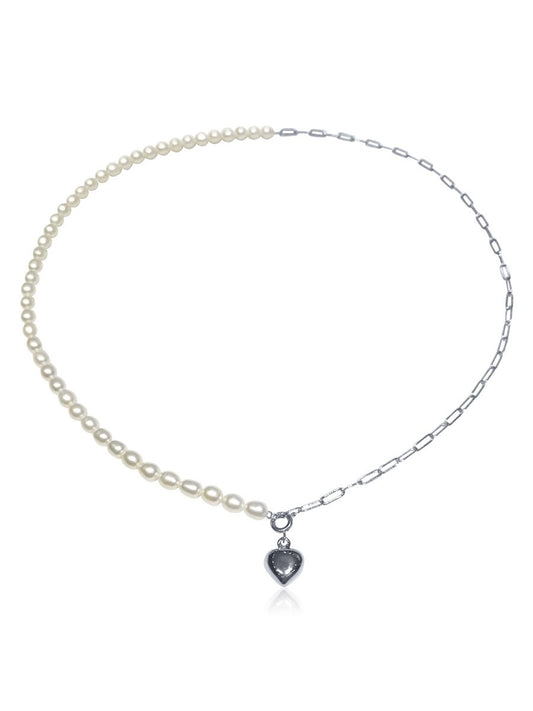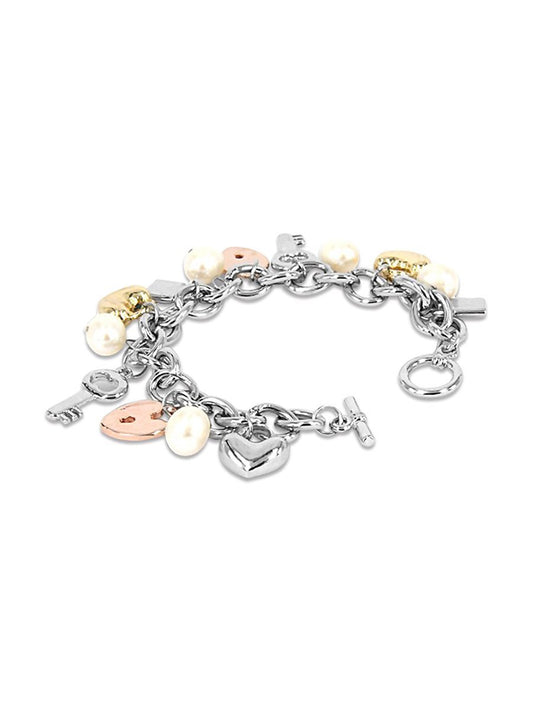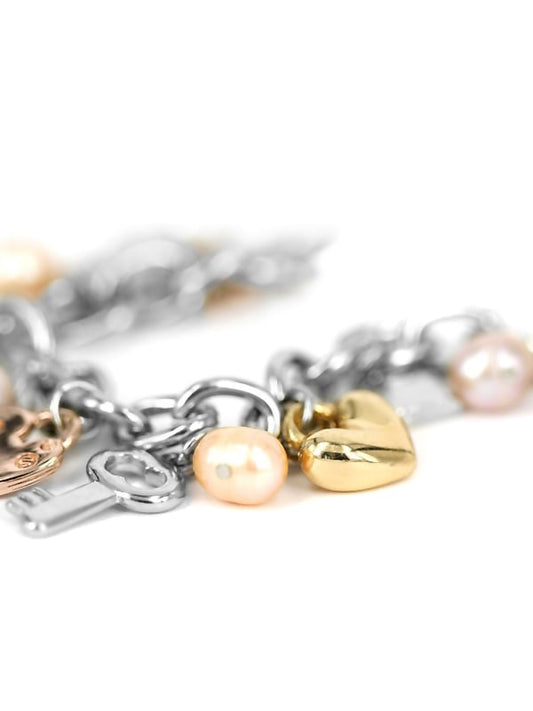What says summer fun more than barefoot walks along a sandy beach, picking up seashells to bring home as souvenirs? Everyone, from children to adults, marvels at the beauty contained in those little shells. And of course, everyone also knows that pearls are formed within a shell, deep under the waves. But how much do you know about mother of pearl, that shimmery, iridescent material that’s been used to make fabulous jewelry for centuries?
How Mother of Pearl is Formed
Mother of pearl is actually the inner lining of a bivalve (two-part) mollusk shell. It’s also known as ‘nacre,’ which comes from the Arabic word Naqqarah, meaning shell. It is formed in much the same way that pearls are formed. When an irritant enters the shell, the mollusk secretes calcium carbonate, along with a special protein. These are actually the same materials it uses to build its shell. Layers of calcium carbonate crystals spread across the shell and over the irritant, interspersed with the protein, which acts as a glue to bind the crystals together.
Luster, Iridescence, and Color
The luster (or, the radiance of the reflected light) of mother of pearl is determined by the number of these layers, as well as their thickness and the regularity of the crystals. Its iridescence – the rainbow shimmering across its surface - is caused by the way that light is diffracted through those crystals.
Luster can be affected by the temperature of the water in the mollusk’s habitat. Thinner layers are better, when it comes to luster, so the cold months when mollusks produce nacre at a slower rate are best for harvesting high-quality mother of pearl.
The unique colors of mother of pearl can be caused by several different factors. A mollusk’s genetic make-up, its food, and the trace metals in the water around it all play a role in determining color. Some mollusks, such as rainbow-lipped or black-lipped oysters, create darker colors, while others, like the white-lipped oyster, create lighter ones. Mollusks are filter feeders, and their diet consists primarily of microscopic algae. The color of the algae can influence the color of the nacre. And even small amounts of metals in the water can change the color of a mollusk’s inner lining: iron produces pink, and copper a greenish blue, while magnesium colors it yellow.
Mother of Pearl Jewelry
Because of its unique luster, iridescence, and coloration, mother of pearl has been prized for thousand of years as the adornment of royalty. Archeological excavations at the ancient sites of Mesopotamia, China, Mesoamerica, and the Pacific have uncovered treasure troves of mother of pearl jewelry and palace artifacts.
Today, you have the opportunity to adorn yourself as the ancient queens did! Modern mother of pearl jewelry comes in all styles and colors, and is perfect for any occasion. You can easily pair a stunning mother of pearl necklace with a little black dress, or add some summer flair to your everyday look with a matching mother of pearl necklace and bracelet.









